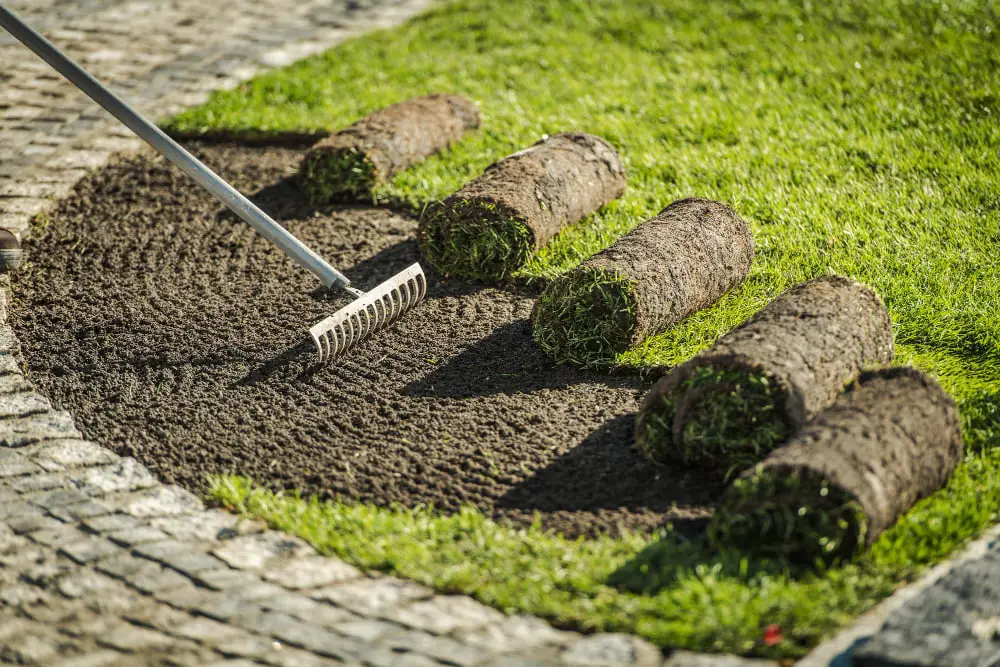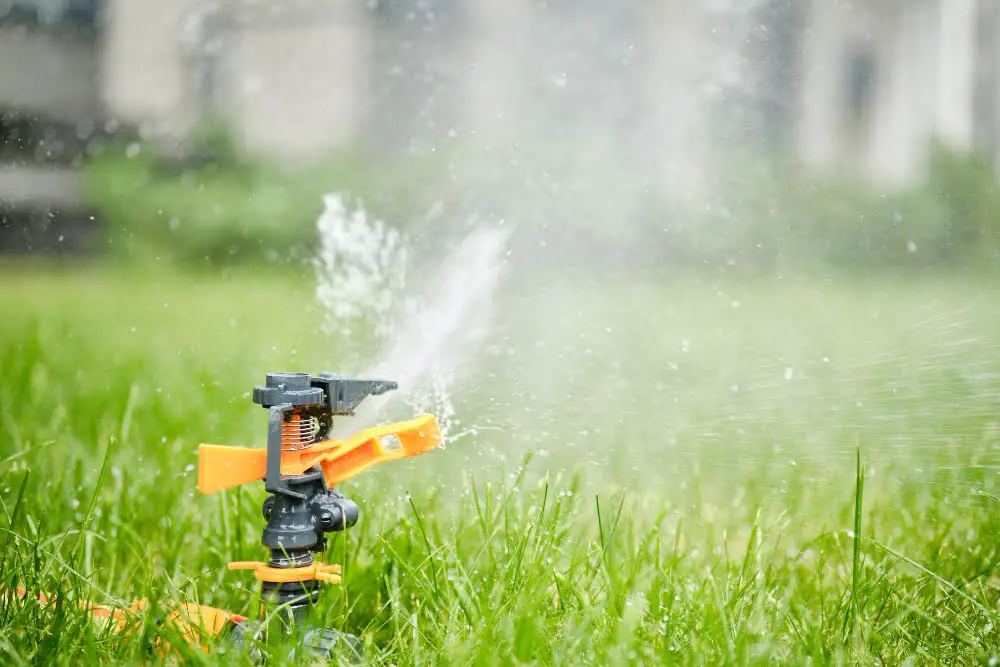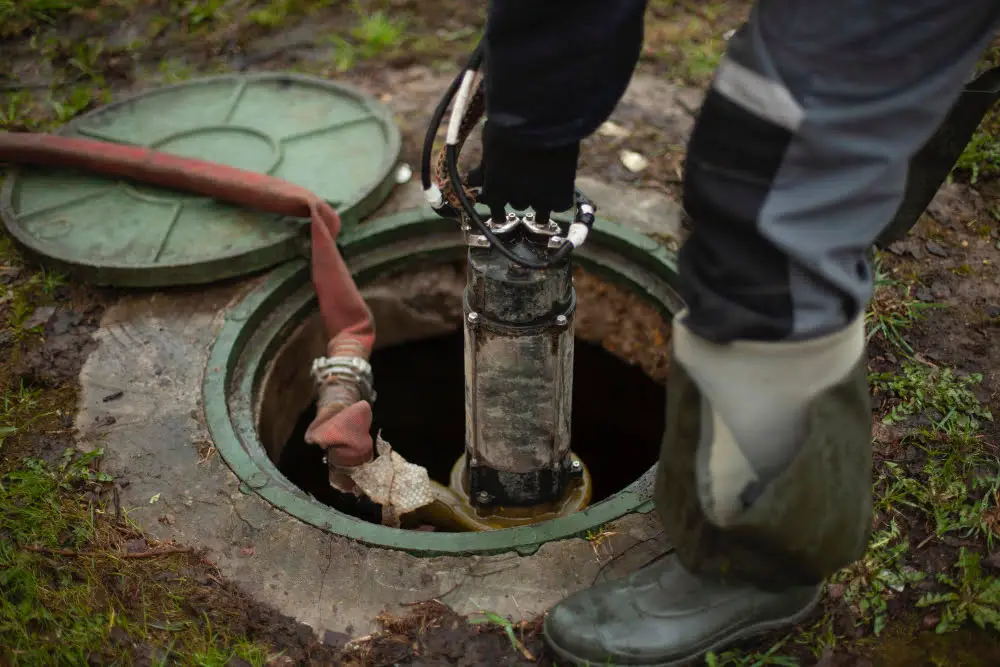Last updated on
A lush, vibrant lawn is the centerpiece of a beautiful garden, providing a soft carpet that’s pleasing to the eyes and gentle on the feet. Achieving and maintaining a healthy lawn, however, is a task that requires knowledge, dedication, and a touch of green thumb magic.
In this blog, we’ll explore six essential tips to ensure your lawn stays healthy, green, and flourishing throughout the year. Whether you’re a seasoned gardener or a budding lawn enthusiast, these strategies will help you cultivate a patch of paradise in your backyard.
Turf Options

Selecting the right type of turf is the foundation of a healthy lawn. There are numerous varieties of grass, each suited to different climates, soil types, and usage. We asked these experts at victoryturftx.com, to recommend the best turf options for various regions.
If you live in a warm and humid climate, go for varieties like Bermuda grass or Zoysia grass. For cooler areas, opt for fescue or bluegrass. Understanding the characteristics of each type will ensure healthier growth and less maintenance.
Fertilizing Fundamentals: Nourishing Your Grass for Optimal Health
Proper fertilization is crucial to achieve a lawn that’s not just surviving, but thriving. Fertilizer replenishes essential nutrients that your grass consumes over time, which may not be naturally abundant in your soil.
Nitrogen, phosphorus, and potassium, the primary components of most fertilizers, play an integral role in the healthy development of grass. Nitrogen promotes lush and leafy growth, phosphorus supports strong root development, and potassium enhances the grass’s overall resilience to stress, disease, and variable weather conditions.
It’s important to use the right fertilizer at the right times of the year to avoid damaging your grass and to encourage vibrant, healthy growth. An autumn fertilizer with higher potassium content, for instance, can prepare your lawn for the cold season ahead, while a nitrogen-rich mix in the spring will kickstart its growth after the winter dormancy.
Always follow the manufacturer’s instructions and local environmental regulations when applying fertilizers to your lawn.
Watering Wisdom: Quenching Your Lawn’s Thirst Effectively

Water is the lifeblood of a healthy lawn, and understanding the right watering techniques can make a significant difference in your lawn’s vitality. Over-watering can lead to shallow root systems, making the grass susceptible to drought and disease, while under-watering can cause the lawn to go dormant and brown. The key is to water deeply but infrequently, promoting a deep root system that sustains the grass during dry periods.
Try to supply one inch of water every week through irrigation or rainfall. The best time to water your lawn is early in the morning when evaporation rates are lower, and there’s less wind to carry the water away from its target.
This not only maximizes water efficiency but also helps prevent fungal diseases that can thrive in the cool, moist conditions of night-time watering. Use a rain gauge or a simple container to measure the amount of water you’re providing to ensure that your lawn receives just the right amount of hydration.
Weed Control Strategies: Maintaining Pristine Turf
A common adversary for any gardener, weeds not only mar the aesthetic appeal of your lawn but also compete with grass for essential nutrients, water, and sunlight. Effective weed control begins with preventative measures, such as maintaining a dense and robust turf that leaves little room for weeds to establish.
Proper mowing practices also play a crucial role; keeping the grass at its ideal height can discourage weed growth by creating a less hospitable environment for them to thrive.
When weeds do appear, prompt action is necessary. There are various methods for weed removal, including manual pulling, which is most effective when the soil is moist and the entire root can be removed. Alternatively, herbicides can offer a solution for widespread weed issues, but they must be used judiciously to prevent damage to the grass and surrounding environment.
Selective herbicides target specific weed types without affecting the grass, while non-selective herbicides should only be used for spot treatments. Always adhere to the application guidelines and consider the long-term health of your lawn and local ecosystem when choosing a weed control strategy.
Disease Defense: Safeguarding Your Lawn’s Health
Just as humans can fall ill, lawns are susceptible to a variety of diseases that can undermine their health and beauty. Fungal pathogens such as brown patches, rust, and dollar spots can cause significant damage, often exacerbated by stress from environmental factors like humidity, temperature fluctuations, and improper watering practices.
To protect your turf, the first line of defense is a strong maintenance routine that includes proper fertilization, mowing, and watering. Healthy lawns are better equipped to resist disease and recover more readily if an infection occurs.
Recent concerns over the Roundup weed killer lawsuit have highlighted the importance of lawn care practices that prioritize safety and environmental consciousness.
Aeration Advantages: Breathing Life into Your Lawn
Aeration is a critical component of lawn maintenance that is often overlooked, yet it provides substantial benefits to turf health. To improve the effectiveness of air, water, and nutrient penetration into the grassroots, this procedure entails drilling tiny holes in the soil.
This helps the roots grow deeply, producing a stronger, more vigorous lawn. Especially beneficial in compacted soils, aeration alleviates soil compaction, improves water uptake, stimulates root growth, and enhances fertilizer absorption.
The Takeaway
Maintaining a healthy lawn requires a comprehensive approach that takes into account various factors, such as turf selection, fertilization, watering practices, weed control, disease prevention, and aeration.
By following these six essential tips and developing a consistent maintenance routine, you’ll be on your way to achieving the lush green lawn of your dreams. With dedication and proper care, your lawn will reward you with a beautiful, inviting space that you can enjoy year-round.
Recap




